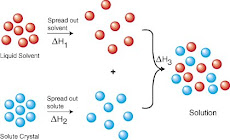 MELBOURNE,
AUSTRALIA—A University of Melbourne researcher has found that over one-third of
Americans report health problems—from asthma attacks to migraine headaches—when
exposed to common fragranced consumer products such as air fresheners, cleaning
supplies, laundry products, scented candles, cologne, and personal care
products.
MELBOURNE,
AUSTRALIA—A University of Melbourne researcher has found that over one-third of
Americans report health problems—from asthma attacks to migraine headaches—when
exposed to common fragranced consumer products such as air fresheners, cleaning
supplies, laundry products, scented candles, cologne, and personal care
products.
The study also found that fragranced products may affect
profits, with more than 20 percent of respondents entering a business, but
leaving as quickly as possible if they smell air fresheners or some fragranced
product. More than twice as many customers would choose hotels and airplanes
without fragranced air than with fragranced air.
In the workplace, over 15 percent of the population lost
workdays or a job due to fragranced product exposure. Over 50 percent of
Americans surveyed would prefer fragrance-free workplaces. And over 50 percent
would prefer that health care facilities and professionals were fragrance-free.
The research was conducted by Professor Anne Steinemann, from
the University of Melbourne School of Engineering, who is a world expert on
environmental pollutants, air quality, and health effects. Professor Steinemann
conducted a nationally representative population survey in the United States,
using a random sample of 1,136 adults from a large web-based panel held by
Survey Sampling International (SSI). The results are published in the
international journal Air Quality, Atmosphere & Health.
‘A Huge Problem’
When exposed to fragranced products, 34.7 percent of Americans
suffer adverse health effects, such as breathing difficulties, headaches,
dizziness, rashes, congestion, seizures, nausea, and a range of other physical
problems. For half of these individuals, effects are potentially disabling, as
defined by the Americans with Disabilities Act.
“This is a huge problem; it’s an epidemic,” says Professor
Steinemann.
Fragranced products are pervasive in society, and over 99
percent of Americans are regularly exposed to fragranced products from their
own use or others’ use. Reports of adverse health effects were as frequent and
wide-ranging across all types of fragranced products.
“Basically, if it contained a fragrance, it posed problems for
people,” Professor Steinemann said.
Professor Steinemann is especially concerned with involuntary
exposure to fragranced products, or what she calls “secondhand scents.” She
found over 20 percent of the population suffer health problems around air
fresheners or deodorizers, and over 17 percent can’t use public restrooms that
have air fresheners. In addition, over 14 percent of the population wouldn’t
wash their hands with soap if it was fragranced.
Many React to Cleaning Products
Over 12 percent of the population experience health problems
from the scent of laundry products vented outdoors, over 19 percent from being
in a room cleaned with scented products, and over 23 percent from being near
someone wearing a fragranced product.
More generally, over 22 percent of Americans surveyed can’t go
somewhere because exposure to a fragranced product would make them sick.
“These findings have enormous implications for businesses,
workplaces, care facilities, schools, homes, and other private and public
places,” said Professor Steinemann. For instance, a growing number of lawsuits
under the Americans with Disabilities Act concern involuntary and disabling
exposure to fragranced products.
Professor Steinemann’s earlier research found that fragranced
products—even those called green, natural, and organic—emitted hazardous air
pollutants. However, fragranced consumer products sold in the United States
(and other countries) are not required to list all ingredients on their labels
or material safety data sheets. Nearly two-thirds of the population surveyed
were not aware of this lack of disclosure, and would not continue to use a
fragranced product if they knew it emitted hazardous air pollutants.
Recommends Fragrance-free Policies
Professor Steinemann’s research continues to investigate why
fragranced product emissions are associated with such a range of adverse and
serious health effects. In the meantime, for solutions, Professor Steinemann
suggests using products that do not contain any fragrance (including masking
fragrance, which unscented products may contain). She also recommends
fragrance-free policies within buildings and other places.
“It’s a relatively simple and cost-effective way to reduce risks
and improve air quality and health,” she explains.
Professor Steinemann has also completed a survey of the
Australian population, with results expected to be published soon. “The numbers
are similarly striking,” she said.
Professor Steinemann can be reached at anne.steinemann@unimelb.edu.au.










































